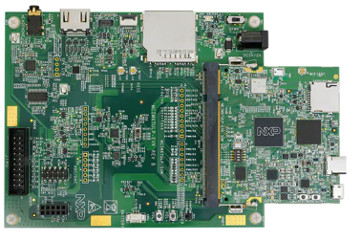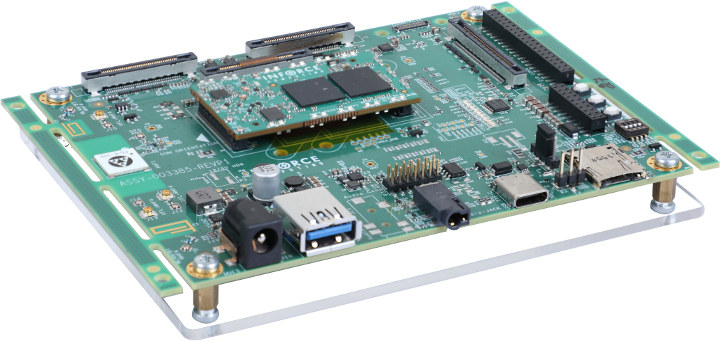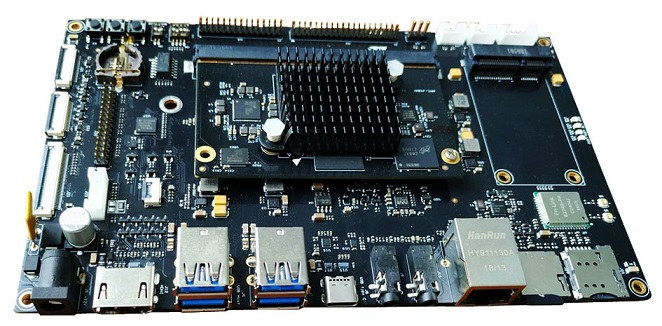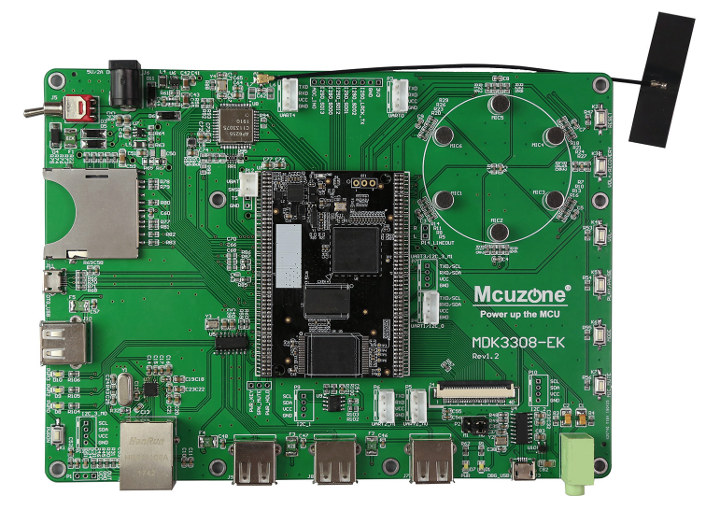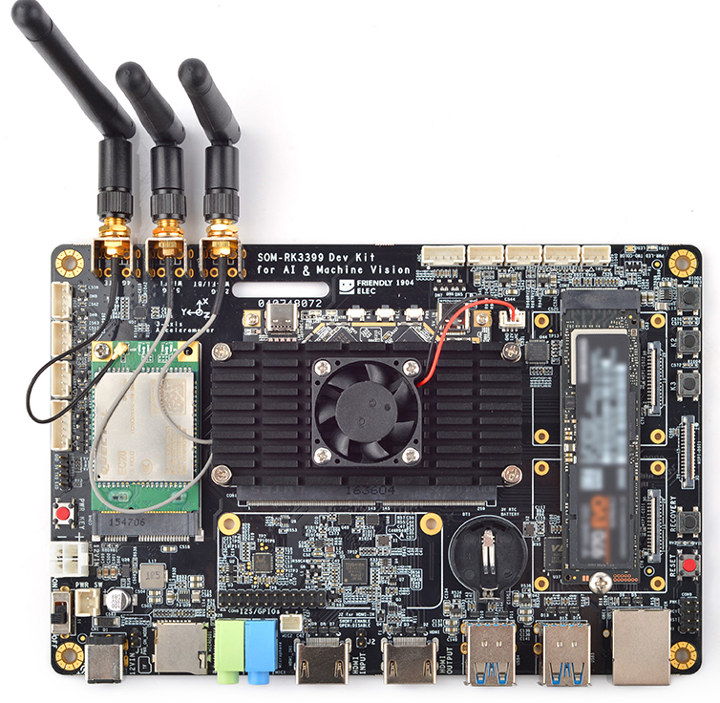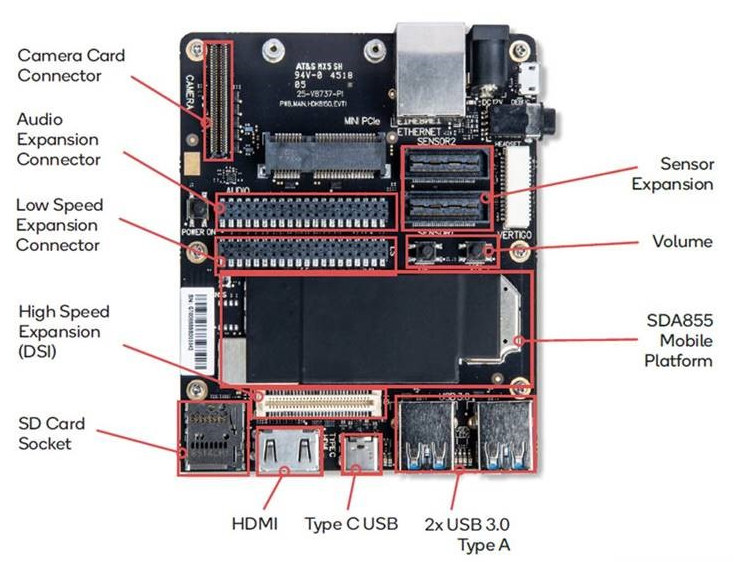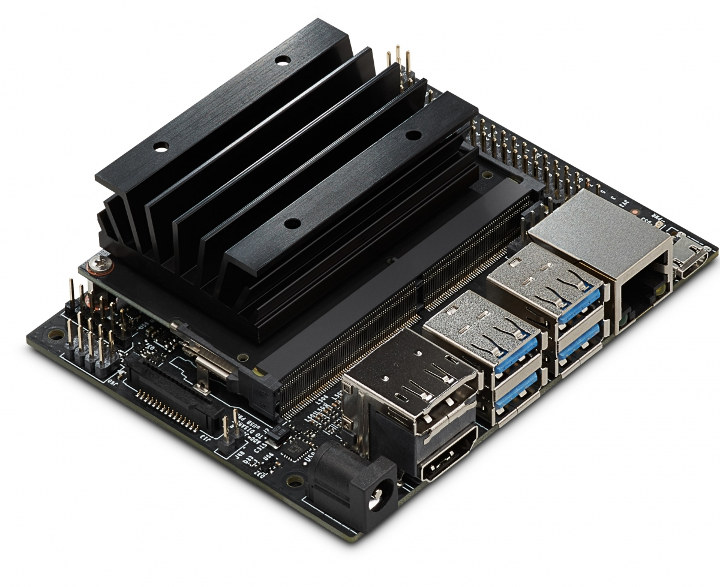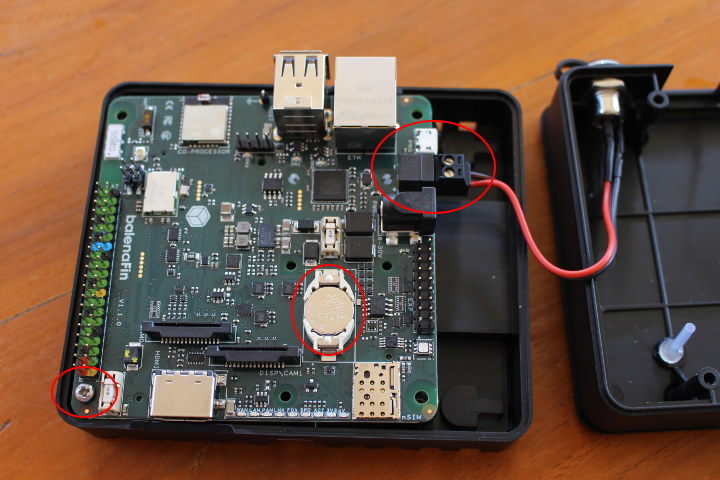Last year, we wrote about F&S Elektronik Systeme PicoCORE MX7 system-on-module (SoM) powered by NXP i.MX 7ULP processor manufactured with a 28nm FD-SOI process, and that was announced a year earlier. The official launch of the module was planned for Q3 2018, but there have been some delays as LinuxGizmos reports NXP has only started mass production of their i.MX7 ULP this June. With the official launch of i.MX 7ULP, the company also introduced the official i.MX 7ULP Evaluation Board (MCIMX7ULP-EVK) as showcased on Element14’s community and several other companies announced i.MX 7ULP systems-on-modules. Benefits of NXP i.MX 7ULP Processor The i.MX7 ULP family of processors is an extremely power-efficient series, that is utilizing lower power for more functions. The SoC is being touted as the most power-efficient processor that can be obtained that also houses a 3D GPU. Although like the i.MX7, the i.MX 7ULP combines both Cortex-A7 and […]
Inforce Introduces Snapdragon 660 & 845 Modules with On-Device AI
Inforce Computing has just launched two new pin-compatible system-on-modules, namely Inforce 6502 and Inforce 6701, powered by Qualcomm Snapdragon 660 & Snapdragon 845 SoC respectively. In their newsletter, the company claims those are their first modules with on-device AI capabilities with the Snapdragon 660 enabling “advanced visual computing, enhanced graphics and on-device machine learning capabilities”, while the more powerful Snapdragon 845 is better suited for “immersive multimedia experiences including optimized AI performance for a more responsive, power-efficient user- experience and capture of cinema-grade videos in UHD@60fps resolution. Inforce 6502 Snapdragon 660 SoM Specifications: SoC – Qualcomm Snapdragon 660 with 8-core Kryo 260 processor, Adreno 512 GPU, Qualcomm Hexagon 680 DSP with Hexagon Vector eXtensions (HVX) for Caffe2 and Tensorflow System Memory & Storage – 3GB LPDDR4, Dual-Channel + 32GB eMMC flash in single eMCP package Connectivity Bluetooth 5.0 + Wi-Fi 5 802.11ac 2×2 with MU-MIMO and Dual Band Simultaneous (DBS) […]
MYiR Launches MYC-JX8MX CPU Module & MYD-JX8MX Devkit Powered by NXP i.MX 8M Processor
MYiR Tech Limited (aka MYiR) has launched a new NXP i.MX 8 CPU module – MYC-JX8MX – powered by NXP i.MX 8M processor, as well as the corresponding MYD-JX8MX development kit. The module integrates up to 2GB LPDDR4 RAM, 8GB eMMC flash, 256Mbit QSPI Flash, Gigabit Ethernet PHY & PMIC onboard, and I/O signals are accessible from a 314-pin MXM 3.0 expansion connector. Typical applications for the company’s latest system-on-module include scanning/imaging solutions, building automation and smart home, human-machine interface (HMI), machine vision or other consumer and industrial applications requiring multimedia capabilities. MYC-JX8MX CPU Module Specifications: SoC – NXP i.MX 8M quad-core Arm Cortex-A53 processor @ 1.3GHz, Arm Cortex-M4 real-time core @ 266MHz, 2D and 3D GPU System Memory – 1GB or 2 GB LPDDR4 (supports up to 4GB LPDDR4) Storage – 8GB eMMC Flash (supports up to 64GB), 256Mbit QSPI Flash 314-pin MXM 3.0 edge connector with: 1x Gigabit […]
Mcuzone RK3308 SoM and MDK3308-EK Evaluation Kit are Designed for Smart Voice Applications
Rockchip RK3308 is a quad-core Cortex-A35 processor that was announced in 2018 together with RK3326 specifically for Smart AI solutions. While the processor is equipped with an RGB LCD output interface, it does not come with a 2D or 3D graphics accelerator, so it’s better suited to smart speakers with an optional display using a basic user interface. I’ve not seen many hardware platforms or boards based on the processor, but today I noticed “Hangzhou Wild Chip Tech” had an RK3308 system-on-module, as well as development kits for sale on Aliexpress with the module price starting at $23. Mcuzone MDK3308 Coreboard Specifications: SoC – Rockchip RK3308 quad-core Cortex-A35 processor @ 1.3 GHz with NEON and VFPv4 FPU System memory / storage configurations: 256MB DDR3/3L + 256MB NAND flash 512MB DDR3/3L + 8GB eMMC flash 2x 100-pin dual row headers (1.27mm pitch) exposing: Display – LCD interface up to 1024×600 (RGB), […]
FriendlyELEC SOM-RK3399 Development Kit Targets AI & Machine Vision Applications
FriendlyELEC is better known for their low-cost tiny single board computers, but the company has also introduced systems-on-module in the past such as Smart6818 module powered by Samsung S5P6818 octa-core processor. The company has now launched another system-on-module with SOM-RK3399, which as its name implied features Rockchip RK3399 processor, as well as a corresponding carrier board mostly designed for artificial intelligence and computer vision applications. SOM-RK3399 System-on-Module Specifications: SoC – Rockchip RK3399 big.LITTLE hexa-core processor with 2x Cortex-A72 cores up to 2.0GHz, 4x Cortex-A53 cores up to 1.5GHz, Mali-T864 GPU with support for OpenGL ES1.1/2.0/3.0/3.1, OpenVG1.1, OpenCL, DX11, and AFBC, and VPU capable of handling 4K VP9 and 4K 10bits H265/H264 60fps decoding, Dual VOP, etc System Memory – Dual-Channel 2GB DDR3 Storage – 16GB eMMC 5.1 flash Networking 802.11a/b/g/n/ac, Bluetooth 4.1, Wi-Fi and Bluetooth combo module (AP6356S), dual antenna interface Realtek RTL8211E Gigabit Ethernet transceiver USB – 2x USB-C […]
Intrinsyc Open-Q 855 Snapdragon 855 Development Board Launched for $1,149
When we wrote about Qualcomm Snapdragon 855 Hardware Development Kit last month, and while it was not available at the time, we expected it to eventually be sold through Intrinsyc. And sure enough, the company is now taking orders for the very first Snapdragon 855 development board sold under the “Open-Q 855” name. Price tag: $1,149 for the board only. The expansion board and display pictured below are not included by default and sold separately We already had a pretty good idea of the technical details last month, but Intrinsyc has provided us with the missing bits of information for Snapdragon 855 HDK specifications: SoC – Qualcomm Snapdragon 855 Octa-core processor with 1x Kryo 485 Gold Prime core at up to 2.7+ GHz, 3x Kryo 485 Gold cores at up to 2.4+ GHz, and 4x Kryo 485 Silver low-power cores at up to 1.7 GHz, Adreno 640 GPU, Hexagon 690 […]
NVIDIA Introduces $99 Jetson Nano Developer Kit
NVIDIA Tegra X1 octa-core Arm processor with a 256-core Maxwell GPU was introduced in 2015. The processor powers the popular NVIDIA Shield Android TV box, and is found in Jetson TX1 development board which still costs $500 and is approaching end-of-life. The company has now introduced a much cheaper board with Jetson Nano Developer Kit offered for just $99. It’s not exactly powered by Tegra X1 however, but instead what appears to be a cost-down version of the processor with four Arm Cortex-A57 cores clocked at 1.43 GHz and a 128-core Maxwell GPU. Jetson Nano developer kit specifications: Jetson Nano CPU Module 128-core Maxwell GPU Quad-core Arm A57 processor @ 1.43 GHz System Memory – 4GB 64-bit LPDDR4 @ 25.6 GB/s Storage – microSD card slot (devkit) or 16GB eMMC flash (production) Video Encode – 4K @ 30 | 4x 1080p @ 30 | 9x 720p @ 30 (H.264/H.265) Video […]
balenaFin Developer Kit Review – Part 1: Unboxing and Assembly Instructions
Balena launched balenaFin 1.1 at the end of last month. The board is a professional carrier board for Raspberry Pi Compute Module 3 / 3+ Lite that includes support for variable voltage power input, optional PoE, industrial eMMC flash storage, a real-time Arm Cortex-M4 core via Artik-020 module, and more. Somehow a balenaFin 1.1 developer kit ended up in my home, and I’ll play with it in several weeks, but in the first part of the review, I’ll just check out the content of the package, and show how to assemble the kit. BalenaFin 1.1 Developer Kit Unboxing The local courier brought a largish balena Fin package. which contained a smaller balenaFin package, and the actual developer kit. Everything is nicely packaged in the box with the part related to power supply in a white box, a small opening for smaller accessories and Raspberry Pi Compute Module 3, as well […]


